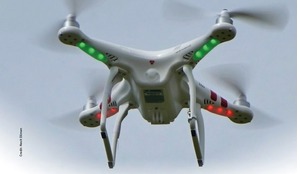Plans by companies such as SpaceX and OneWeb to add thousands of new small satellites to the 1000 or so active satellites already in low Earth orbit make the sustainable management of space debris more important than ever. In an attempt to address this, the MAAC research and development group, a Japan-based cross-university team, is hard at work developing new technology they hope will become a game changer for space debris remediation: the aeroshell.
An aeroshell is a flexible, low-mass structure that can be deployed from a spacecraft in low Earth orbit (LEO) to substantially increase its frontal area, and hence air drag, resulting in a faster loss of altitude. This umbrella-like structure is stowed away during a satellite’s main mission and deployed at end of life to hasten its orbital decay; think ‘Mary Poppins’, except that the aeroshell is deployed upstream of the satellite.
Faster orbital decay means that the satellite spends less time orbiting Earth once it has become inactive, thus reducing the risk of collision with other spaceborne objects. Of course, by definition, aeroshells only work in the presence of air, so their operational ceiling is situated at the far reaches of the atmosphere, around 600 km in altitude.














